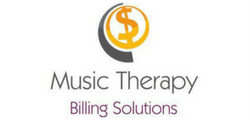We are now officially halfway through our Private Practice 101 series! So far, we’ve discussed your purpose and reason for starting a business, finding people to help you on your journey, setting up your business structure, and what it takes to get paid.
Today’s topic: Paperwork.
In my mind, there’s one reason paperwork exists: it’s a communication tool. This could be a contract communicating an agreement between two parties, an invoice communicating payment for services, or a documentation note communicating what happened during a session.
 Your paperwork system will likely evolve as your business grows and evolves. Mine has. It first changed when I hired employees. This involved much more paperwork, as there were more people to communicate with. Even now, I am consistently review my paperwork, trying to streamline it and make it more functional for my clients and for myself.
Your paperwork system will likely evolve as your business grows and evolves. Mine has. It first changed when I hired employees. This involved much more paperwork, as there were more people to communicate with. Even now, I am consistently review my paperwork, trying to streamline it and make it more functional for my clients and for myself.
But that’s not where we’ll start–we’ll start at the beginning. The following are pieces you’ll need to have in place when you first open your business. I am operating under the assumption (as I have all along) that it’s just you and your clients and you’re just starting out. So here we go…
Contracts
A contract is an agreement between two or more parties to do something, to not do something, or to promise something. Technically, contracts can be oral, but your business contracts really should be in writing.
I’ve found that if I’m setting up a contract with a large agency, it’s easier to work with their contracting system. A hospital or mental health agency will often have systems in place for creating contracts. Use them.
My private client contracts come in two forms: Policies and Procedures/Rights and Responsibilities for music therapy clients and Policies and Procedures for music lesson clients (although most therapists in private practice won’t need this distinction, many music therapists will).
Policies and Procedures/Rights and Responsibilities (Therapy Clients)
This document includes the following components (and answers the following questions):
- Description of Services: What am I providing for you? (e.g. length of session, frequency of session, type of session)
- Scheduling: How is scheduling arranged?
- Payment (more on that below): What do you agree to pay me for the above services?
- Absences and Cancellations: What happens if I cancel a session? What happens if you cancel a session? What happens if you don’t show up or there’s an emergency?
- Terms of Agreement: When is this contract effective? When does it expire?
- Rights and Responsibilities: What rights does the client have? What are his/her responsibilities to help ensure a successful therapeutic experience?
- Acknowledgment and Consent Form: This is the “contract” piece, the form that’s signed by both parties saying they agree to all the terms, policies, and agreements listed above.
Policies and Procedures (Music Students)
This document has many of the same elements as the music therapy client one, with some additions and changes:
- Description of Services: What am I providing for you? (e.g. length of lesson, frequency of lesson, type of lesson)
- Scheduling: How is scheduling arranged?
- Payment (more on that below): What do you agree to pay me for the above services?
- Equipment and Practice: What do I expect from you in terms of practicing and equipment you’ll need to have (e.g. instruments, books, cleaning supplies)?
- Absences and Cancellations: What happens if I cancel a lesson? What happens if you cancel a lesson? What happens if you don’t show up or there’s an emergency?
- Terminations: How do we go about canceling lessons?
- Acknowledgment and Consent Form: This is the “contract” piece, the form that’s signed by both parties saying they agree to all the terms, policies, and agreements listed above.
Give your clients a copy of the Policies and of the signed Acknowledgment form. Keep the original signed Acknowledgment Form for your files.
Documentation
As a therapist, it is our professional responsibility to document, document, document. Again, I use different documentation systems and processes for my agency contracts versus my private clients. I recommend you work within the system of the agency/hospital/treatment center to create a referral, assessment, and documentation system that meets their needs. This will look different for each site.
For your private clients, here are some of the paperwork pieces to have in place:
- Referral Form: This is what you’ll use to capture information you’ll need when you first receive a referral. It will be important to include any/all of the following information: client name, client diagnosis, client age/DOB, client sex, parent/guardian name, parent/guardian phone and/or email, name and contact info for person who’s referring client, reason for referral. These are your notes for your files.
- Assessment: I have a couple of forms for this part of the process. The first is a “hands-on” document I use during the assessment process. It’s what we use to take notes and write comments. It includes a basic checklist (poor/fair/good/NA) for different “goal” areas (e.g. physical, appearance, behavioral, social, emotional, etc.), a comments section for each “goal” area, and space for client history and interview notes. The second is the formal assessment form that includes: summary of client history, summary of the client’s strengths and needs, recommendations for treatment, initial goals and objectives. I provide the client with a copy of the formal assessment.
- Weekly Documentation: You’ll need to take notes following each session. In general, I’m a fan of keeping it simple and easy-to-use. It doesn’t make much sense (to me) to spend 20 minutes writing a play-by-play account of what occurred during a 30-minute session. This note (whether you use a SOAP system, a narrative, or a checklist system) should provide an overview of what happened. Another consideration: many of my parents are not able to be at our session. So, this month, I’m starting something new. I will be leaving a copy of the weekly progress note at the client’s home, to keep the parents up-to-date on how their child did.
- Reports: You’ll need to periodically review your client’s progress and re-evaluate their goals and objectives. This may occur monthly, quarterly, semi-annually, or annually. I prefer quarterly reports–it’s a nice fit for me and for my clients. I recommend you review this report with your clients and provide them with a copy.
Invoices
An invoice should include the following: your business name and contact information, the client’s name and contact information, the invoice date, a list of the services provided (including date, type of service, cost for each service), total amount due, and how and when the client should pay.
There are some wonderful, easy-to-use templates available. You can use financial software (e.g. Quickbooks, Quicken) to create an invoice. Some word processing and spreadsheet applications (e.g. Word, Excel) also have invoice templates you can adapt and use.
You’ll need to figure out a system for when and how you send invoices. I highly recommend you get in a routine, both for your own business and for your clients (most of whom may not appreciate paying for 3 months of services in bulk). I send invoices on the 1st of the month, every month. I email some invoices and snail mail others, based on the preferences of the client.
Pricing
Some thoughts on setting up your pricing structure: there are many, many variables that go into setting up your pricing. Location, types of services, frequency of services (e.g. are you there 10 hours/week? or 30 minutes a week?), therapist experience, etc.
For music therapists, I recommend you refer to the AMTA Sourcebook. It has some good information about what music therapists are paid based on type of job, type of service, and location.
Remember this, too: what your business gets paid will not be the same as what you can pay yourself. Your business will have additional expenses: taxes, insurance, equipment, postage, etc. Based on my experience, plan on paying yourself 30-50% of what your company brings in. Better yet, get some advice from your accountant.
NEXT WEEK: Next week, we start diving into marketing! It doesn’t do any good to have these wonderful services if no one knows about them:D
P.S. Earlier this week, I announced the winners of our sponsorship experiment: Chords for Change and Clinical Rhythms. Both companies are doing some wonderful service-oriented work, so be sure to click on their logos (look upper right) and check them out!


 orcid.org/0000-0001-8665-1493
orcid.org/0000-0001-8665-1493






{ 5 comments… read them below or add one }
What a great post! I was lucky enough to be part of a music therapy company with a full time office person so I am not used to all the paperwork. This is a really well organized and succinct list of the things involved. I look forward to the marketing post next!
.-= Daniel Tague´s last blog ..When the Thought Counts! =-.
Thanks for yet another awesome post. I never even thought about contract for private clients.. so glad you included it.
I wanted to add an AWESOME resource I found yesterday. If any of you are, like me, going along and starting your own private practice, you are probably finding a lot of salvation in Kimberly’s posts. I’m not sure how much in depth she is going to get into the meat and bones of business plans etc, so I might be jumping the gun here, but sba.gov is awesome, and the Small Business Development Centers are even more awesome.
I called these guys yesterday expecting to have to pay some money to get assistance writing my business plan (and I need it to be super good, because I need loans to start), and I found out that SBDC will not only help you write your business plan, but they will assist with financial planning, marketing, accounting, management, and scoring loans.
I know I sound like an ad service, but I was just blown away. And it’s all FREE for start up assistance. They are federally funded.
Here is how to find an office near you:
http://www.sba.gov/aboutsba/sbaprograms/sbdc/sbdclocator/SBDC_LOCATOR.html
These aren’t college students, they’re people who have been running their own companies for years and want to help us do the same.
SO EXCITED
.-= Natalie´s last blog ..Healing Sick Kids Through Music =-.
Many thanks for this excellent plugin – this is really helpful for all those bloggers like me. Seems like you’ve got a really good weblog loaded full of information too. Thanks.
This information was very helpful and thorough. Do you have an example of a contract/invoice that incorporates all these? Thanks.
Great……… nice post…
You must log in to post a comment.
{ 2 trackbacks }